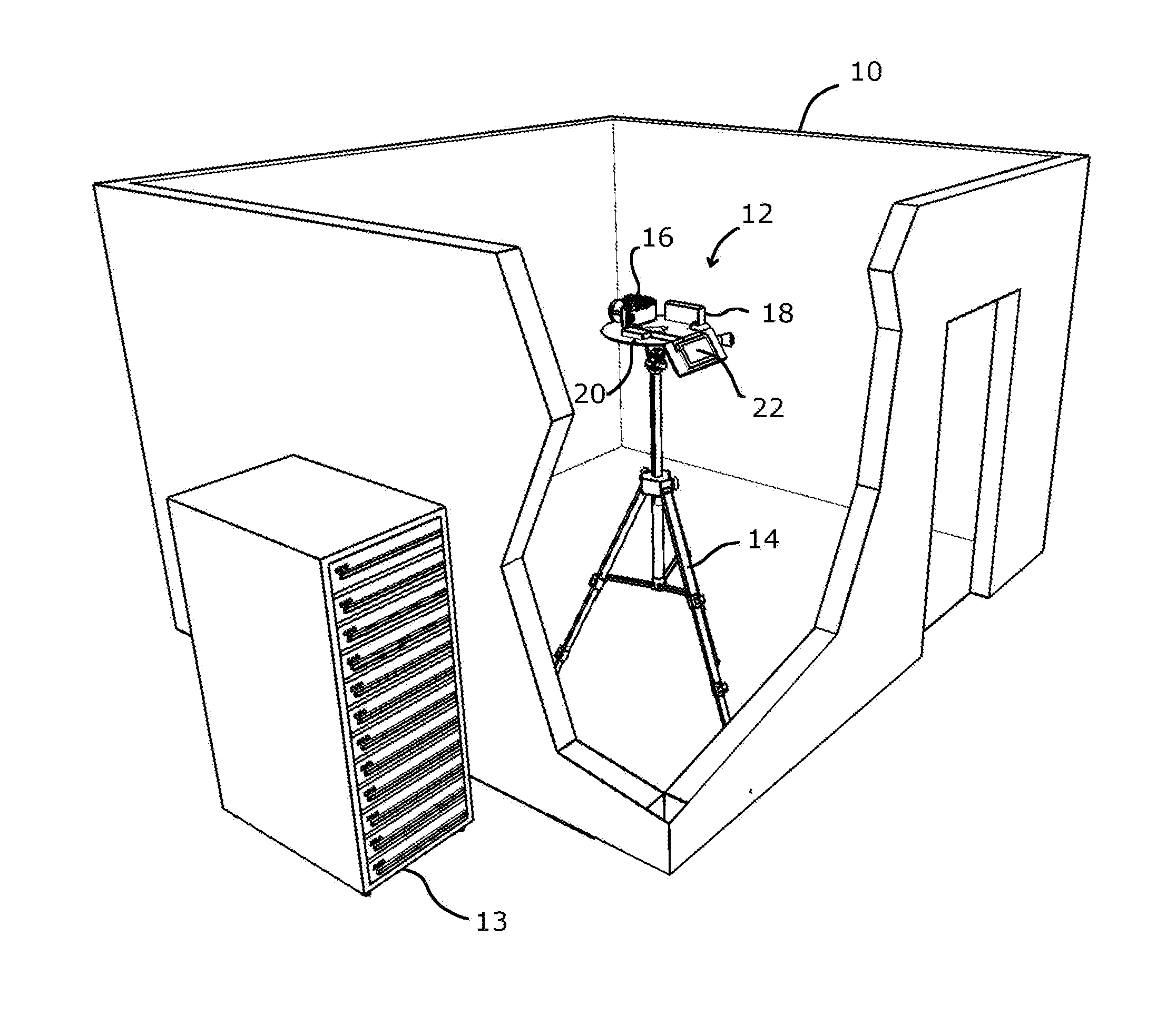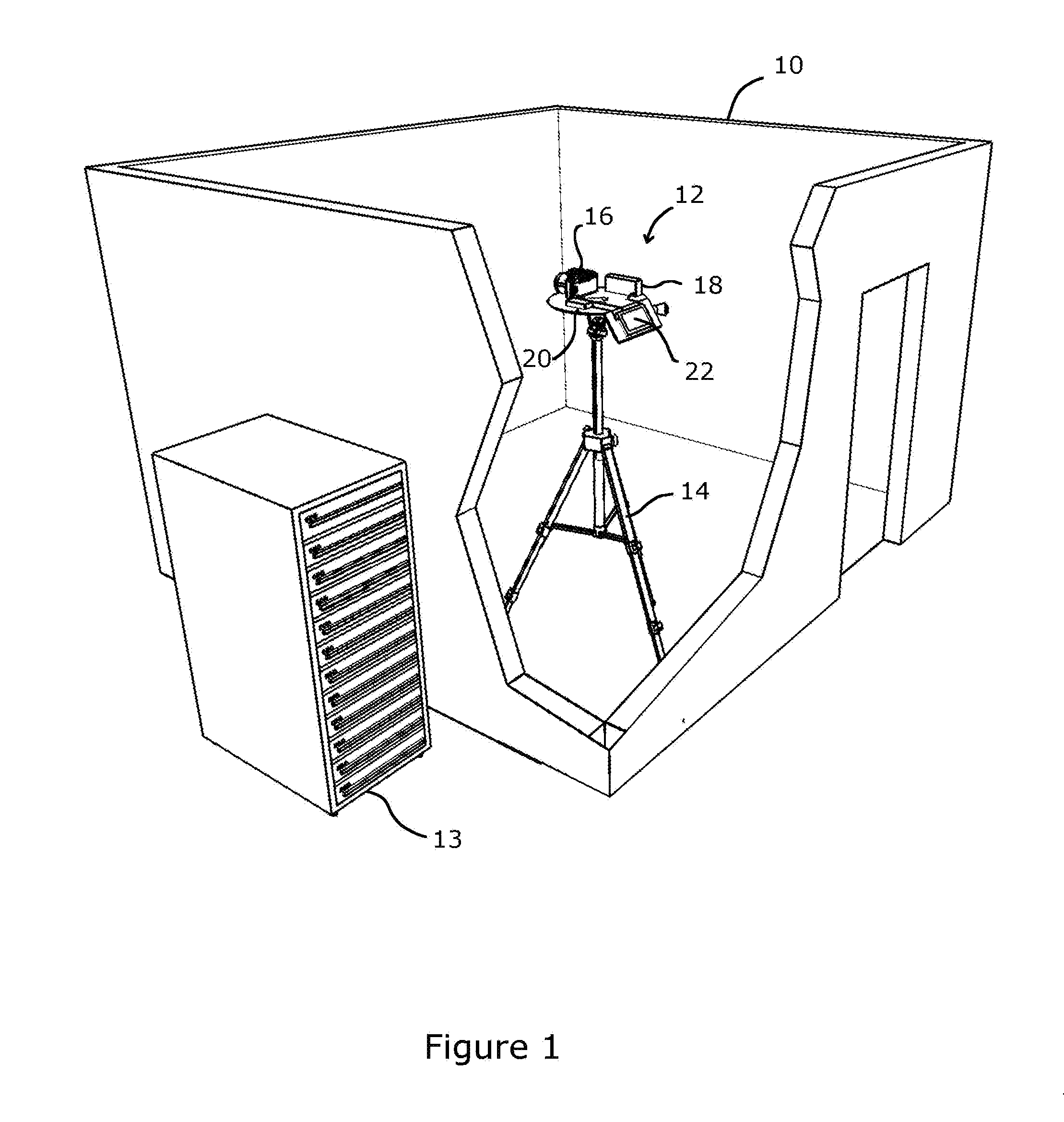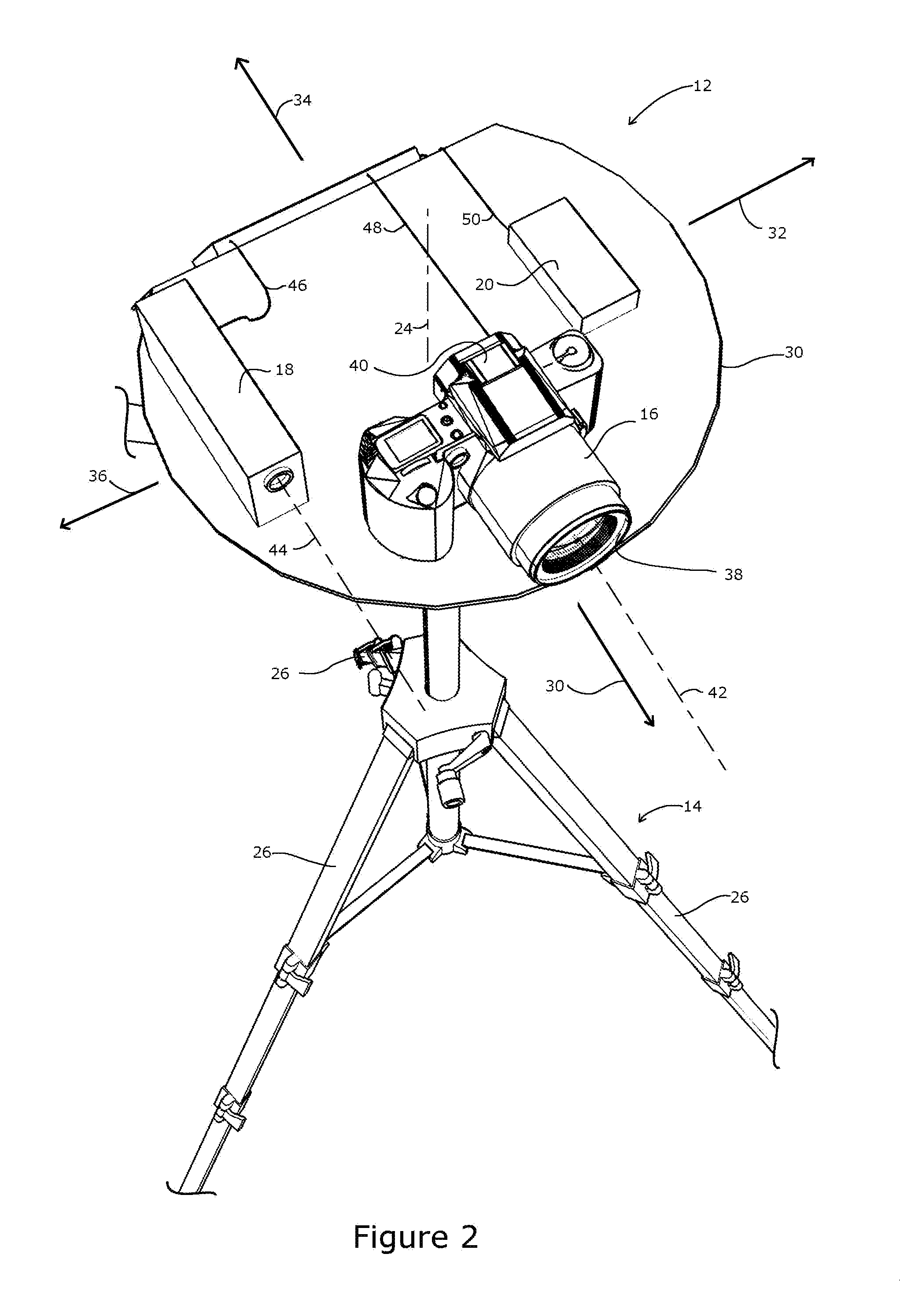Apparatus and Method for Spatially Referencing Images
- Summary
- Abstract
- Description
- Claims
- Application Information
AI Technical Summary
Benefits of technology
Problems solved by technology
Method used
Image
Examples
Embodiment Construction
[0021]FIG. 1 illustrates an embodiment of an indoor space 10, a distance-referencing camera 12 for acquiring distance-referenced images of an indoor space, and a tour server 13. (Tour server 13 is depicted near the camera 12 in FIG. 1, but in many applications, would be geographically distant.) In some embodiments, as explained further below, the distance-referencing camera 12 may be configured to obtain panoramic images of the interior of indoor spaces and to obtain data indicative of the locations from which the panoramic images are captured. As explained below, the data indicative of the locations from which the panoramic images are captured may be acquired with relatively little effort and using relatively inexpensive hardware.
[0022]In some instances, the distance-referencing camera 12 may be configured to obtain, for each panoramic image (“panorama”), a relatively small number of distance measurements of the distance between the distance-referencing camera 12 and the walls of t...
PUM
 Login to View More
Login to View More Abstract
Description
Claims
Application Information
 Login to View More
Login to View More - R&D
- Intellectual Property
- Life Sciences
- Materials
- Tech Scout
- Unparalleled Data Quality
- Higher Quality Content
- 60% Fewer Hallucinations
Browse by: Latest US Patents, China's latest patents, Technical Efficacy Thesaurus, Application Domain, Technology Topic, Popular Technical Reports.
© 2025 PatSnap. All rights reserved.Legal|Privacy policy|Modern Slavery Act Transparency Statement|Sitemap|About US| Contact US: help@patsnap.com



